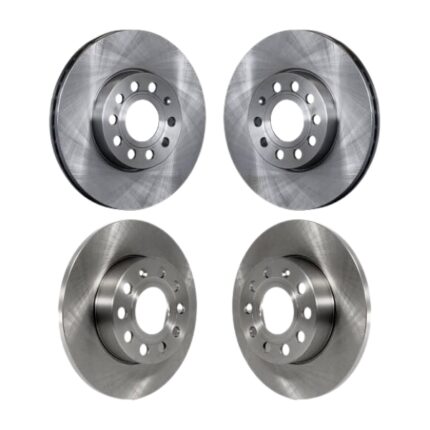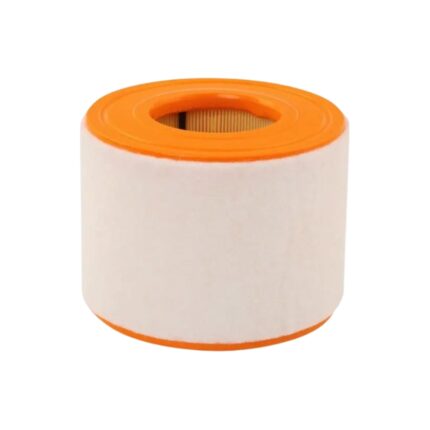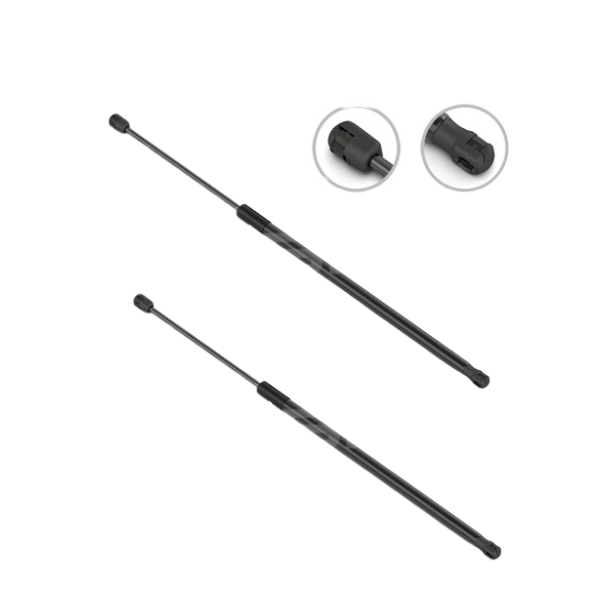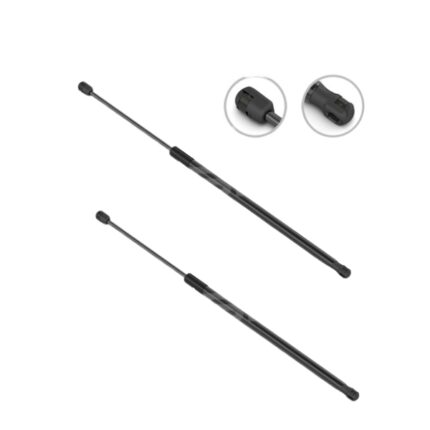Get VW Jetta IV-1.8T Rear Trunk Strut 3B5827550E in Kenya
Trunk struts, also known as trunk lift supports, gas springs, or gas struts, are essential components in modern vehicles, playing a crucial role in the operation and convenience of opening and closing the trunk. These struts assist in lifting and holding the trunk lid open, making it easier to access the trunk space without the need for manual effort. Understanding the function, types, benefits, common issues, and maintenance of trunk struts can enhance appreciation for their role in vehicle convenience and safety.
Structure and Function of Trunk Struts
Trunk struts are gas-filled cylinders that provide the necessary force to lift and hold the trunk lid. They consist of several key components:
Components of a Trunk Strut
- Cylinder: The main body of the strut, which houses the gas and piston.
- Piston: Moves within the cylinder, creating the necessary pressure to lift the trunk lid.
- Rod: Connected to the piston, extends and retracts to move the trunk lid.
- Seals: Prevent gas leakage and ensure smooth operation.
- Mounting Points: Connect the strut to the trunk lid and the vehicle body.
Function in Vehicle Operation
The primary function of trunk struts is to provide controlled lifting and holding of the trunk lid. When the trunk is opened, the gas inside the strut is compressed, generating pressure that assists in lifting the lid. The struts also hold the trunk lid in the open position, preventing it from accidentally closing and ensuring easy access to the trunk space.
Types of Trunk Struts
Trunk struts come in various types, each designed to meet specific requirements and preferences.
Gas Struts
Gas struts are the most common type, using compressed gas (usually nitrogen) to create the necessary force for lifting and holding the trunk lid. They are known for their smooth operation and consistent performance.
Hydraulic Struts
Hydraulic struts use fluid pressure to assist in lifting the trunk lid. These struts are typically more robust and can handle heavier loads, making them suitable for larger vehicles and trunks with additional equipment.
Spring Struts
Spring struts use mechanical springs to provide lifting force. While less common than gas or hydraulic struts, they are simple in design and can be effective for smaller trunks.
Benefits of Trunk Struts
Trunk struts offer numerous benefits that enhance vehicle convenience, safety, and user experience.
Ease of Use
One of the primary benefits of trunk struts is the ease of opening and closing the trunk lid. The struts provide the necessary force to lift the lid, reducing the effort required by the user. This convenience is particularly appreciated when carrying heavy or bulky items.
Safety
Trunk struts play a crucial role in vehicle safety by securely holding the trunk lid in the open position. This prevents the lid from accidentally closing, which can cause injury or damage. The controlled movement of the struts also ensures that the lid does not slam shut, reducing the risk of injury.
Accessibility
By holding the trunk lid open, struts provide easy and uninterrupted access to the trunk space. This is particularly beneficial when loading and unloading items, allowing for hands-free operation and improved efficiency.
Durability
Modern trunk struts are designed for durability, often featuring high-quality materials and advanced engineering to withstand repeated use and exposure to various environmental conditions. This durability ensures reliable performance over the lifespan of the vehicle.
Common Issues and Maintenance of Trunk Struts
Like all mechanical components, trunk struts can experience wear and tear over time. Regular inspection and maintenance are crucial for ensuring their proper function and extending their lifespan.
Signs of Worn Trunk Struts
- Difficulty Opening the Trunk: Increased effort required to lift the trunk lid can indicate weakened struts.
- Trunk Lid Does Not Stay Open: If the trunk lid falls or does not stay open, the struts may be failing.
- Slow or Jerky Movement: Smooth operation is a sign of healthy struts; slow or jerky movement indicates potential issues.
- Visible Damage: Leaks, dents, or corrosion on the struts are signs of damage that need to be addressed.
Maintenance Tips
- Regular Inspection: Periodically check the struts for signs of wear, damage, or leakage.
- Cleanliness: Keep the struts clean and free from dirt and debris, which can affect their performance.
- Timely Replacement: Replace worn or damaged struts promptly to maintain functionality and safety.
- Lubrication: While most struts are maintenance-free, some may benefit from occasional lubrication to ensure smooth operation.
Advances in Trunk Strut Technology
Modern advancements in trunk strut technology have led to improved performance, durability, and ease of use.
Enhanced Materials
The use of advanced materials, such as high-strength steel and corrosion-resistant coatings, enhances the strength and longevity of trunk struts. These materials are designed to withstand the stresses of repeated use and exposure to environmental elements.
Improved Sealing Technologies
Improved sealing technologies protect trunk struts from contamination by dirt, moisture, and other debris. These seals help maintain the integrity of the gas or fluid inside the strut, reducing wear and extending the life of the component.
Advanced Engineering
Modern trunk struts feature advanced engineering that provides smoother and more controlled movement. Innovations in piston design and gas pressure regulation contribute to consistent performance and improved user experience.
Follow us on Facebook for more parts.




